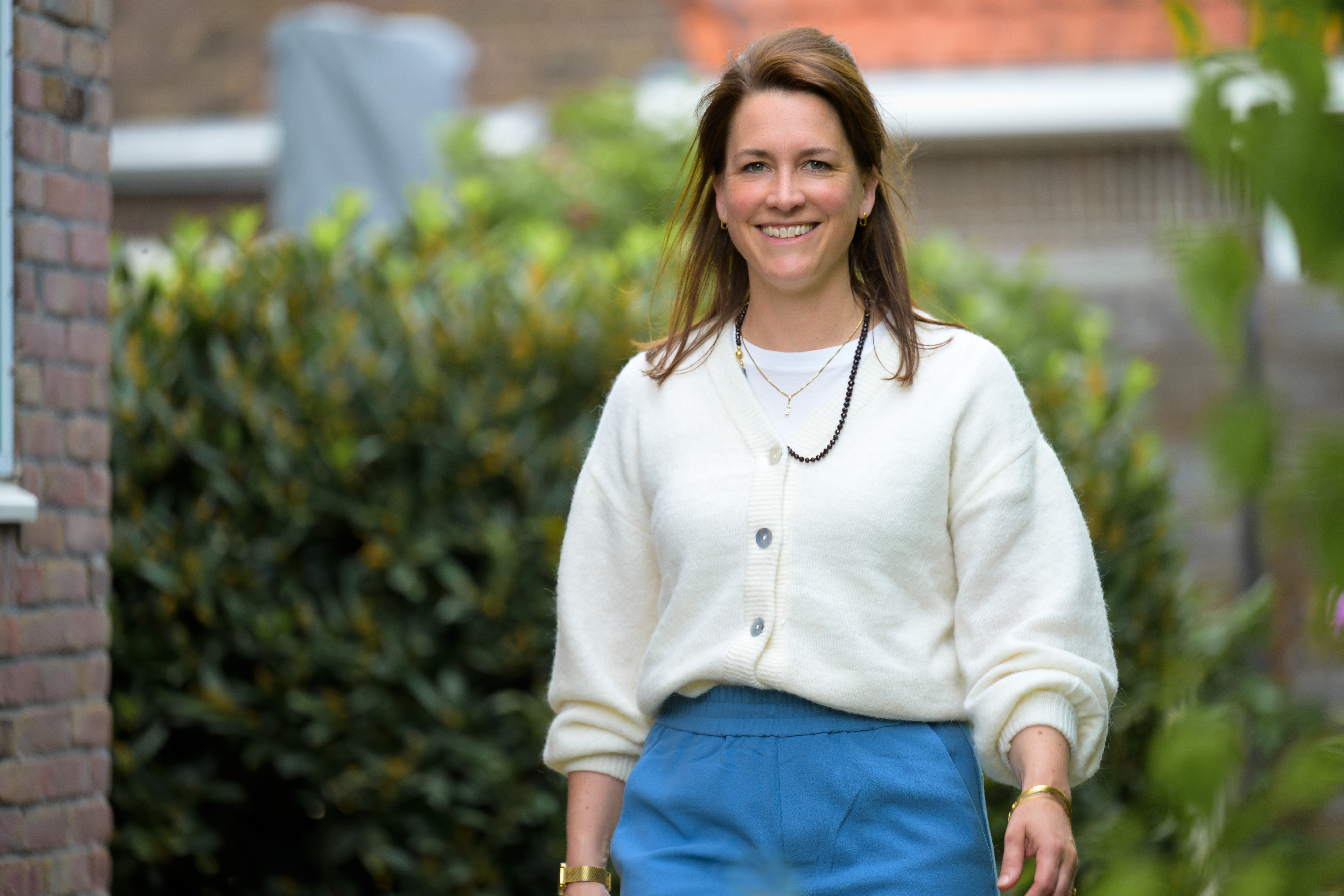The Netherlands is experiencing increasingly extreme heat waves resulting in drought. On the other hand, global warming is actually causing intense peak rainfall with greater risk of flooding. AM is now working on the Netherlands of tomorrow and therefore applies climate-adaptive measures in its projects. Malika van de Weerd, program manager for sustainability, and her colleagues created the climate fan with 22 measures based on successful applications.
Fan of opportunities points the way in climate adaptation

"In the climate fan we have bundled all climate-adaptive measures for our developers and other colleagues. It is a logical follow-up to our climate effect scan . For all projects that AM develops, we conduct a climate effect scan," explains Malika. "With this tool, AM's developers precisely see what the risks of an area are when it comes to climate change. How sensitive is the area to drought, to heat stress, to waterlogging or is there a chance of flooding? Based on these initial insights, choices can be made: is this a logical place for housing development and can we reduce climate risks with climate-adaptive measures? Our developers need very practical information at this stage. The climate fan provides this. Among other things, it describes the benefits of 22 measures, which suppliers can implement the measures, the costs and whether subsidies are possible. So they can make the right choices to ensure that an area remains resilient and pleasant to live in the future."
I think it is important to look at the long term as much as possible. Maybe because I am young and so it is about my own future, but also because this is often forgotten.
Open to share information
Malika developed the climate fan together with Frank Vonk of the AM Lab and Madelief Ritt of Team Sustainability at BAM Advies & Engineering. Malika: "AM develops and BAM realizes. In both phases, our colleagues gain valuable experience with climate-adaptive measures. So for the climate fan, we asked both AM and BAM colleagues to share this knowledge. With all our colleagues, but also externally. We made the fan available online in a slightly modified form, so that people outside our organization can also access the information." Malika sees that this way of sharing knowledge is becoming more and more normal for organizations engaged in the sustainability transition. "I see that people working on the sustainability transition in this sector are helping each other and are open to sharing information. We are all working together for the future of our country and want to make a pleasant living environment for everyone. I think it is important to look at the long term as much as possible. Maybe because I am young and so it is about my own future, but also because this is often forgotten."
Linking opportunities
Besides sharing knowledge, the climate fan is a useful tool for area developers. Malika: "It gives insight into what is possible. But of course it is not the case that they simply incorporate a number of these measures into the project and then it is settled. Each area is unique and each project requires its own integral approach with the necessary flexibility towards the future. With the climate fan, they can enter the conversation with landscape architects, for example, and together come to the right overall approach for the area." Implementing the measures in the right way creates "linking opportunities," according to Malika. "For example, natural, green solutions against heat stress and flooding also contribute to a pleasant living environment. This is good for the health of residents and for biodiversity."
 Malika, Frank en Madelief
Malika, Frank en Madelief
Both natural and technical solutions
Through a top five list of the most integral measures, one can quickly see which measures are useful in different levels. Malika herself is enthusiastic about improving the soil. "I always thought of climate adaptation primarily as above-ground measures, but a healthy soil is the basis for a healthy ecosystem. Optimizing soil structure allows the soil to retain moisture better. This helps to withstand dry periods and provide plants with sufficient water. We can contribute to this by adding organic material to the soil such as compost or mulch, by providing gardens with topsoil instead of sand and even earthworms." In addition to natural measures, innovative technical and structural solutions can also be found in the climate fan, Malika: "A circular water system is an interesting opportunity to deal with future water shortages. Rainwater is then collected at building level in a buffer tank, purified and reused for flushing the toilet, watering the garden or even as soft wash water."
From rain barrel to tiny forest
One area where AM is already working on climate adaptation in an excellent way is the Schoemakerplantage in Delft, says Malika: "This is an area where various measures have been applied to create a climate-proof area. Think of rainwater that is drained above ground via wadis (a ditch in which water can infiltrate, ed.) to the new open water in the park. In addition, residents will receive a rain barrel in their backyard and we will provide inspiration through garden design sessions to create a nature-inclusive garden. A "tiny forest" has also been created with forty plant and tree species. This has since created a biodiversity of six hundred plant and animal species counted. The tiny forest also has a climate-adaptive function to retain water and combat heat stress. Furthermore, the parking lots in the area are semi-paved so that water can infiltrate into the soil. The area has a lot of greenery with native plant and tree species." These measures can be found in the fan so that other colleagues can get to work with them as well.
Developments
Because developments in the profession happen rapidly, the climate fan is a dynamic document. "The costs of measures change and innovations do not stand still. We will therefore continuously make adjustments to keep the document up-to-date. In this way, the fan remains attractive to our colleagues and partners and we hope to continue to inspire them in the field of climate adaptation."


